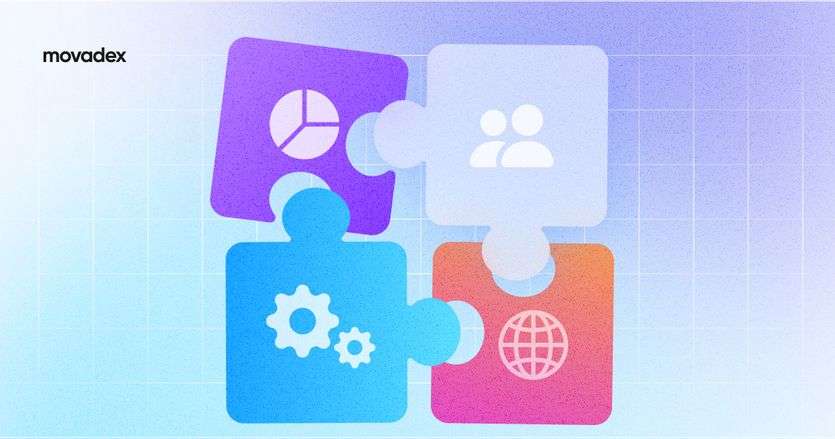Ever wondered why certain B2B brands excel? It's not always about having a groundbreaking product; branding can be the true game-changer. Even if your product lacks innovation, a robust brand can set you apart and leave a lasting impression.
Consider Staples, a major player in the office supply retail sector catering primarily to businesses. Let's face it, office supplies aren't exactly cutting-edge. Yet, Staples has successfully crafted a strong brand by positioning itself as the ultimate destination for businesses' office needs—reliable and incredibly convenient.
So, today, I'll delve into the intricacies of developing a standout brand in 2024.
What is B2B Branding?
A brand is how a company or product is perceived by those who experience it. An individual can also have a brand. According to Frontify, customers who had a “very good experience” with a brand are 94% more likely to purchase again. That’s why, it’s advantageous to know how to solidify your branding strategy with the help of 5 practices.
B2B branding, short for "business-to-business branding," is the strategic process of shaping a company's identity and reputation specifically for other businesses, and its target clients. It goes beyond just logos and marketing materials to encompass the entire experience a business client has with your company, from initial awareness to ongoing service and support.
Unlike B2C (business-to-consumer) branding, which targets individual consumers, B2B branding focuses on organizations and their decision-makers. Therefore, usually, more time should be spent on branding and marketing than on B2C.
Key Elements of B2B Branding (In Brief)
Crafting a successful brand identity is like building a beautiful and functional house. You need a strong foundation (value proposition, mission, and vision) and a well-defined blueprint (brand strategy) before you can start laying bricks (visual elements and messaging).
a) Brand Identity
Brand identity is the visible and invisible characteristics of a brand that distinguish it from its competitors. This includes the logo, colors, typography, and imagery that a brand uses. It's the first thing people see, so it's important to make a good impression.
b) Brand Messaging:
This is the way a brand communicates with its audience. It includes the tone of voice, mission, the words used, and the overall message that a brand wants to convey. Also, it weaves your value proposition - the unique problem you solve - into your mission and vision. Then, it sharpens your positioning, carving out a distinct space in the market, and polishes your USP - the one-of-a-kind reason to choose you.
c) Marketing-Brand Strategy
The visual identity stands out as the fourth crucial aspect in shaping your B2B brand strategy. Elements such as your logo and color palette are pivotal contributors to building brand recognition and recall in all marketing platforms. It's imperative to maintain consistency in deploying your visual brand identity across all platforms once it's established, ensuring a unified and memorable presence for your brand. P.S.: and it also saves time.
d) Digital Presence
A business website or app not only helps you show up in search results when people look for the products or services you offer but also plays a crucial role in building trust and authority. I mean, who wants to depend on a poorly designed site or app, especially when it involves making payments?
And if you need some numbers to back that up:
a) According to Pulsion, a whopping 88% of online shoppers say they won't return to a website if they have a bad user experience.
b) An update report from CISQ estimates that the cost of poor software quality in the US has surged to at least $2.41 trillion, though not in similar proportions as observed in 2020. The accumulated software Technical Debt (TD) has now increased to approximately $1.52 trillion.
e) Employee Branding
Simply put, employee branding is the things they tell people about what it's like to work for you. It includes things like the mission, vision, and personalized messages crafted for your workforce. This aspect is sometimes overlooked when the focus is solely on customers. Still, it's your employees who become the most effective word-of-mouth advocates, yielding excellent results in all forms of marketing.
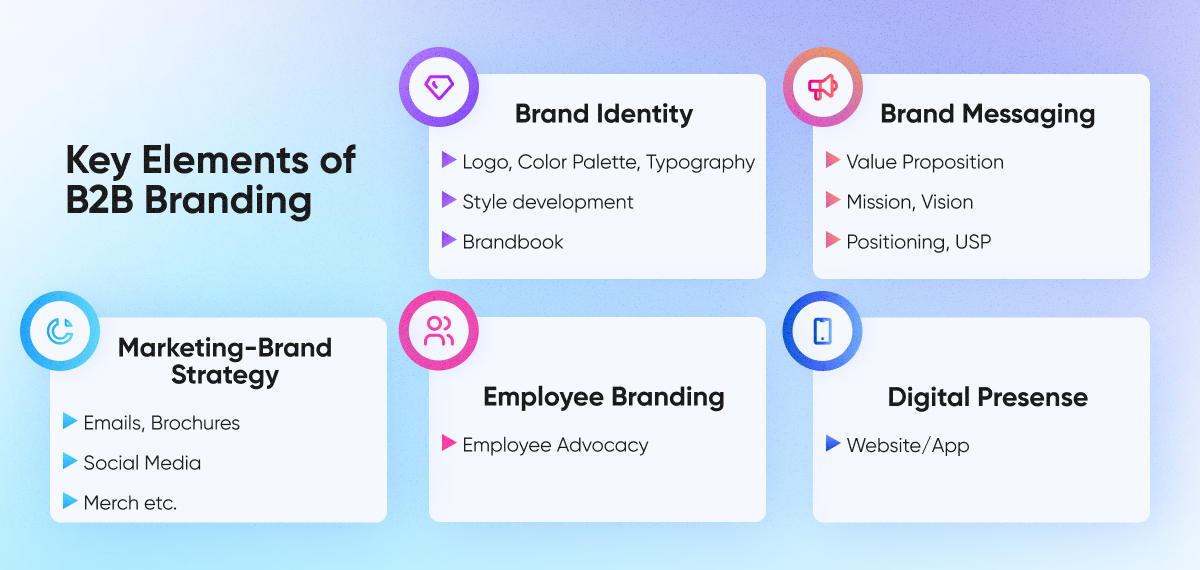
B2B Brand VS Product
Why did I incorporate this paragraph into the article? Because the distinction between brand strategy and the product is frequently blurred.
It's essential to bear in mind that B2B brand and product are not conflicting elements; instead, they are complementary pillars working together harmoniously. A robust brand offers the context and emotional connection that draws in clients, while a top-notch product provides the functionality and value that ensures their satisfaction.
Simply put, the brand builds trust and emotional connection, highlighting your company's values and expertise. Think about the website, informative content, and friendly customer service. The product delivers tangible value, solving specific business problems with quality and reliability. Both are crucial, but they play different roles. A strong brand attracts attention, while a great product keeps clients satisfied. The key is to find the perfect balance, ensuring your B2B party is both inviting and delicious.
I've put together the table below for your reference.
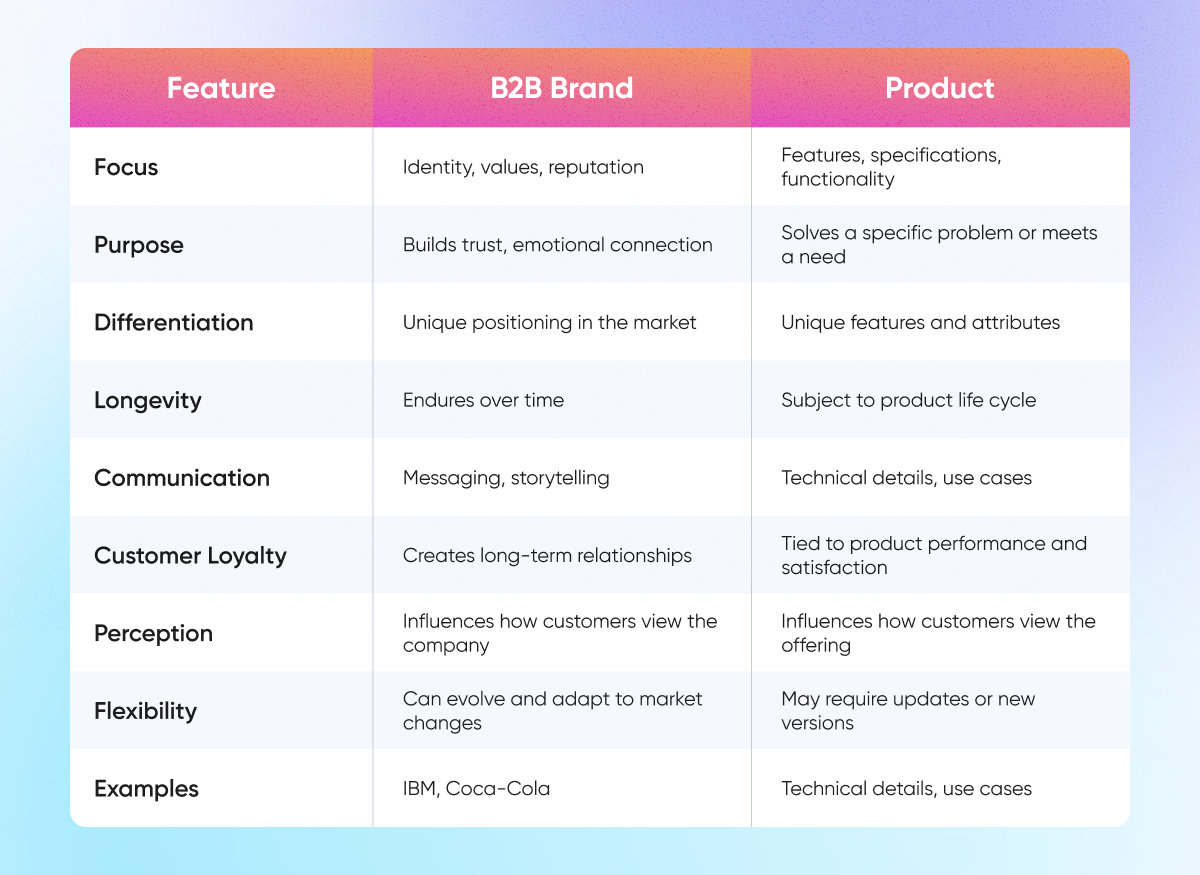
B2B Brand Strategy: A Comprehensive Guide
I'll mainly draw from the experience of our company working with B2B clients as I break it down. Additionally, I'll include visuals to help you better understand the information and precisely grasp my points.
Discovery Session
It all begins with research, and it doesn't matter whether you're a designer, marketer, or developer. That's why in our company, we allocate at least 1 week to the discovery session, ensuring that the branding aligns with the market, target audience, and communication strategy.
Typically, during the discovery session, it's crucial to address key aspects such as defining the brand's mission, core values, competitors, brand voice, business model and market analysis, persona and value proposition, archetypes, and SWOT analysis. I'll delve into each point in detail below.
Brand Mission
Time is constantly ticking away. Technology, people, and even your product can evolve within your business. But one thing remains constant — your mission. It's a single sentence that stays with you in your corporate culture, campaigns, pitch decks, and when answering the question, 'Tell me about your company.’
A mission is a concise declaration of an organization’s goals, values, and objectives.
The formula for a mission is: To [verb] [what] for [whom] by [how], in order to [why].
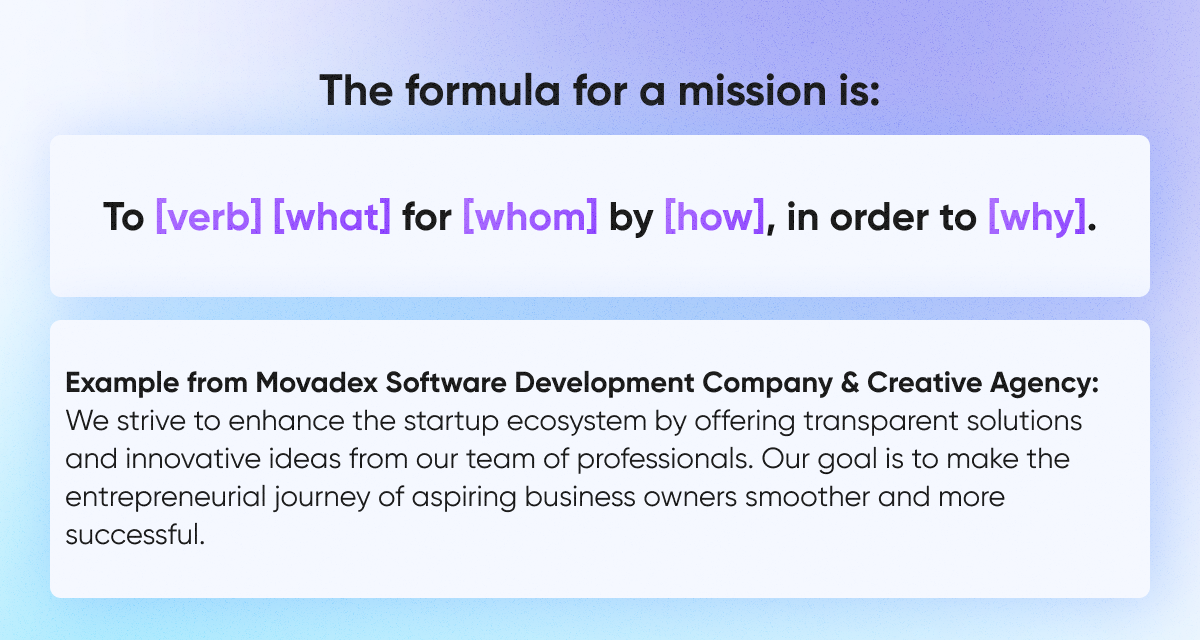
For instance, this concise mission statement captures the essence of FedEx's business: providing reliable and efficient delivery solutions that enable businesses to reach their full potential. It's not just about shipping packages; it's about connecting people, markets, and opportunities.
Here's why this mission is so effective:
a) Simple and memorable: It's easy to understand and sticks in your mind.
b) Focus on customer benefits: It emphasizes how FedEx helps businesses achieve their goals.
c) Ambitious and inspiring: It suggests that anything is possible with FedEx's services.
d) Consistent with brand values: It aligns with FedEx's reputation for speed, reliability, and innovation.
Or, take a look at our example of the B2B brand Revenue Roll — RevenueRoll is committed to reshaping how businesses generate revenue. They offer a comprehensive suite of tools and strategies designed to enhance profitability and foster sustainable growth.
Their mission is to develop revolutionary products to provide transparency and control of online advertising back to growing businesses.
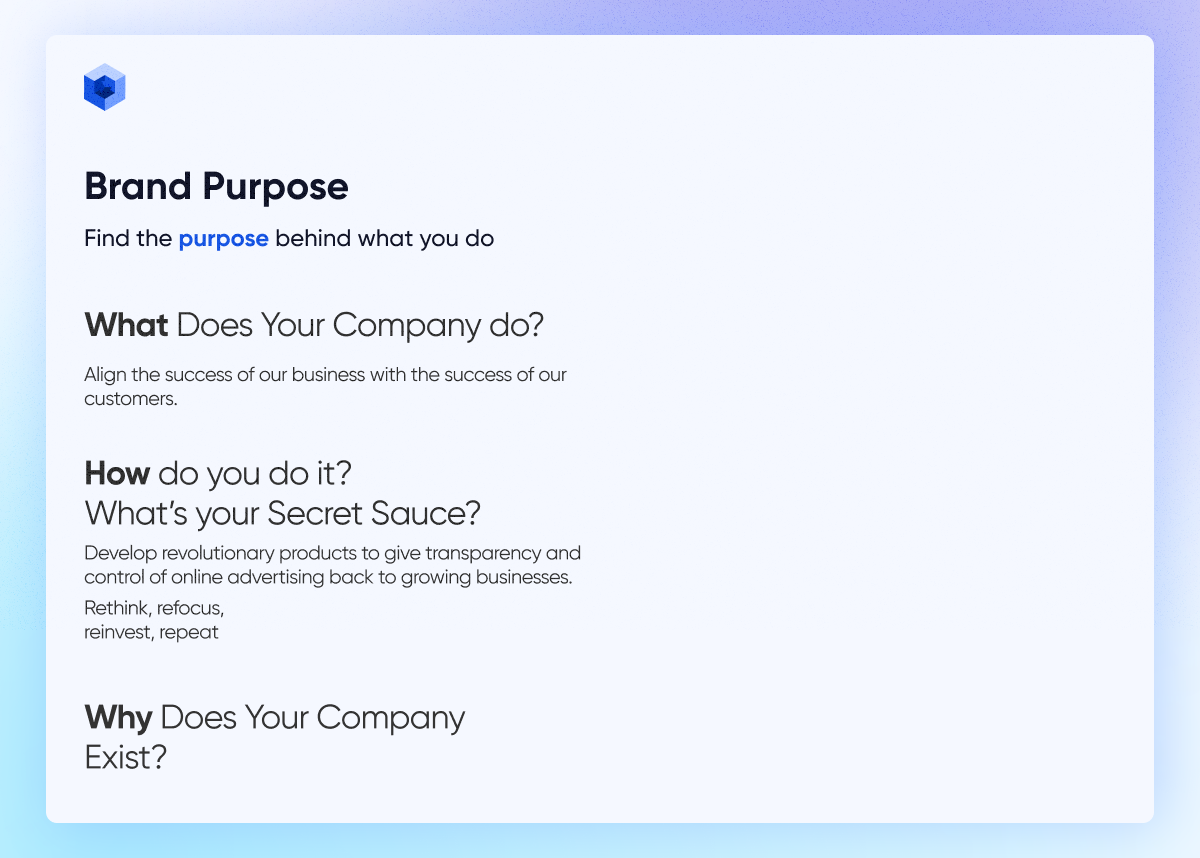
Core Values
While a common notion suggests that for startups, money takes precedence over values, my team and I firmly believe that values play a pivotal role in shaping both branding and communications. This belief holds particularly true for challenger brands, such as Revenue Roll. Purchasing a product is not merely a transaction; it's a customer's act of supporting specific personal values. Brand values contribute significantly to and expedite brand positioning but necessitate consistent validation in various forms.
Implementing this doesn't demand much time, but it does save you a considerable amount of it. For instance, this is how we executed it for our client.
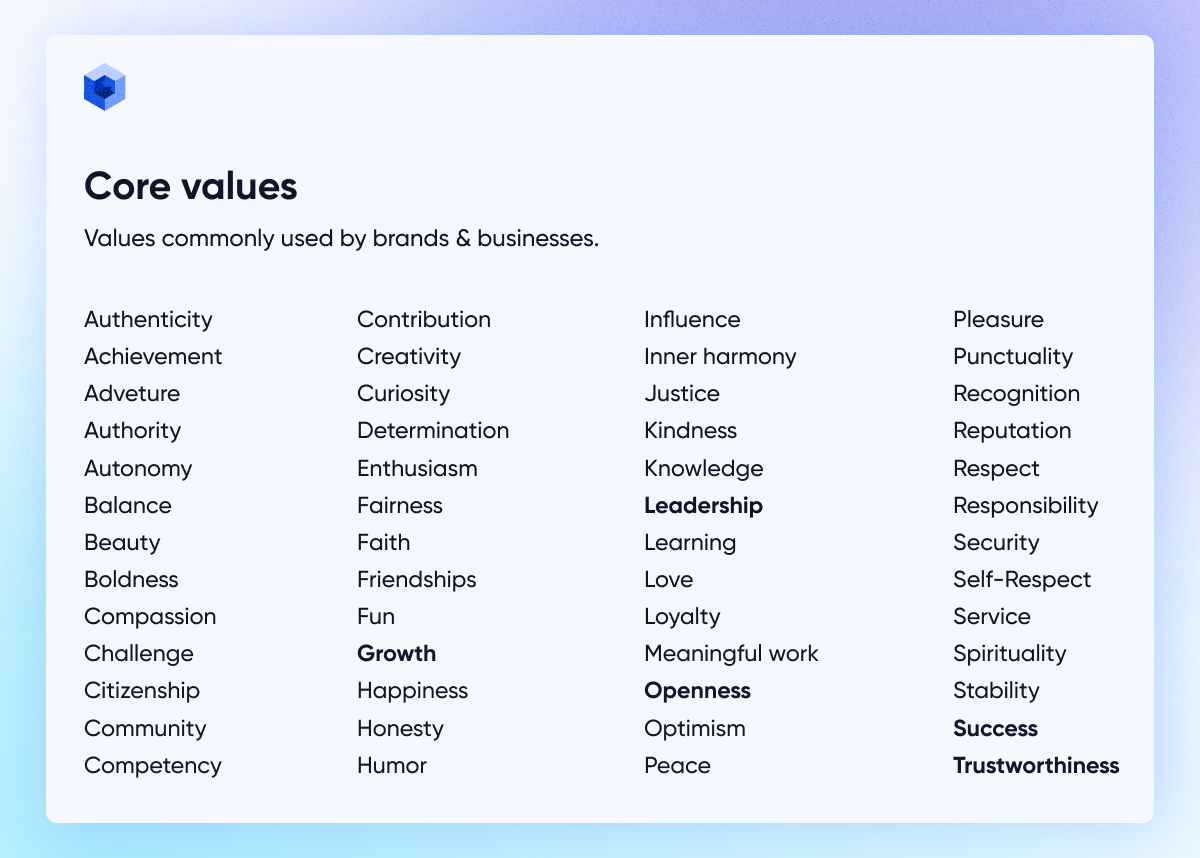
Brand Archetype (s)
Think of them as the DNA of your brand personality. These archetypes, initially introduced by Carl Jung and subsequently adapted for branding purposes, serve as universal 'symbols' designed to connect brands with consumers on a profound emotional level.
You can blend multiple archetypes. For instance, in our brand, we combined the Hero and Creative archetypes, as reflected in our communication: confident yet simultaneously creative.
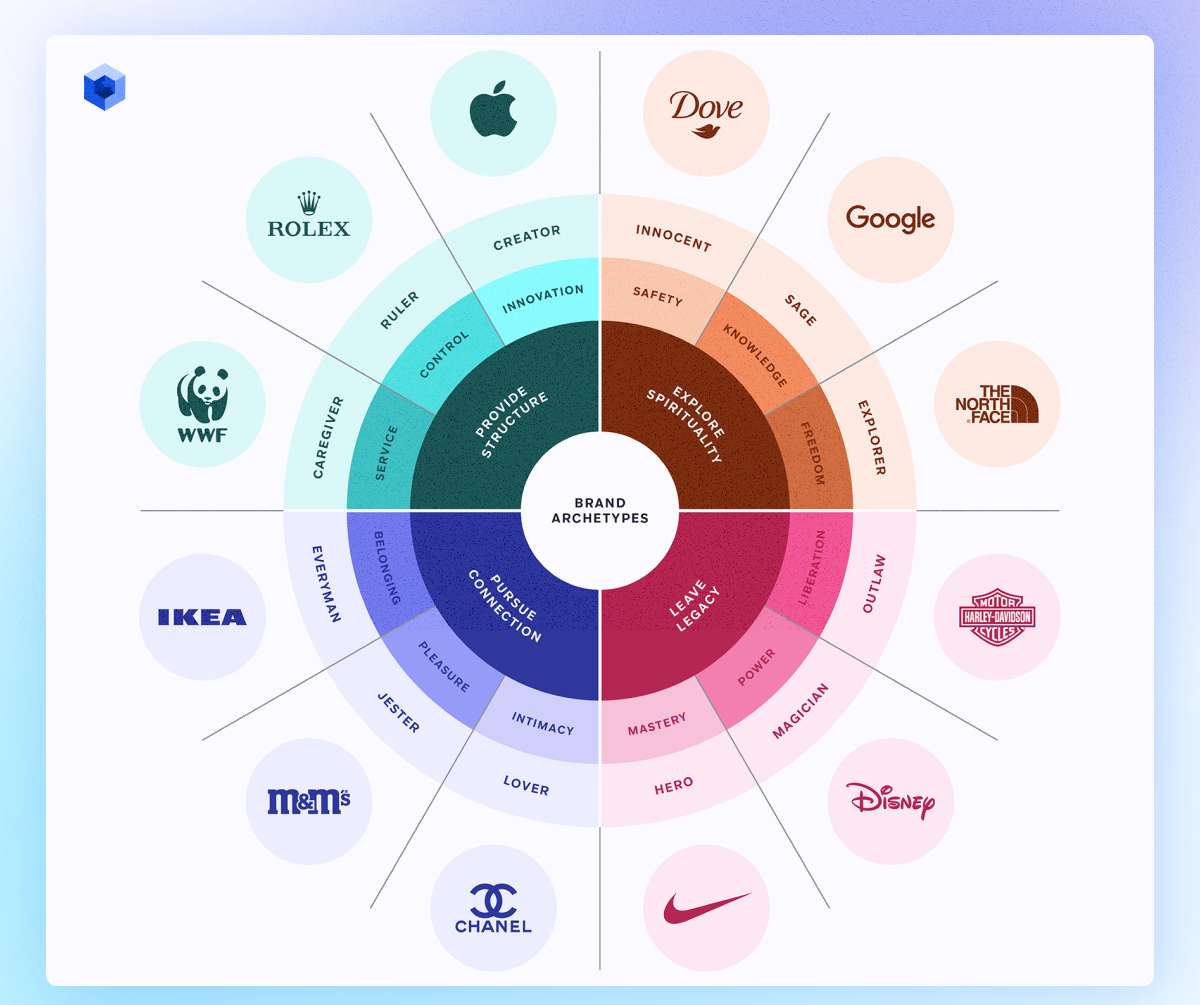
Brand Voice
Your brand voice is your way to stand out in the crowd. It's more than just words; it's the tone, style, and personality that infuse your interactions with customers, partners, and even employees.
It's also your means of distinguishing yourself from the competition. For instance, if your research shows that most of your competitors are sticking to a more corporate vibe, and you aim to inject humor while breaking down stereotypical barriers associated with your B2B business, effectively narrowing your target audience to modern millennials or even Gen Z, the brand voice becomes paramount in shaping your brand.
Take a look at how we crafted a brand voice for a B2B brand, a service we can seamlessly provide for your business during the branding stage.
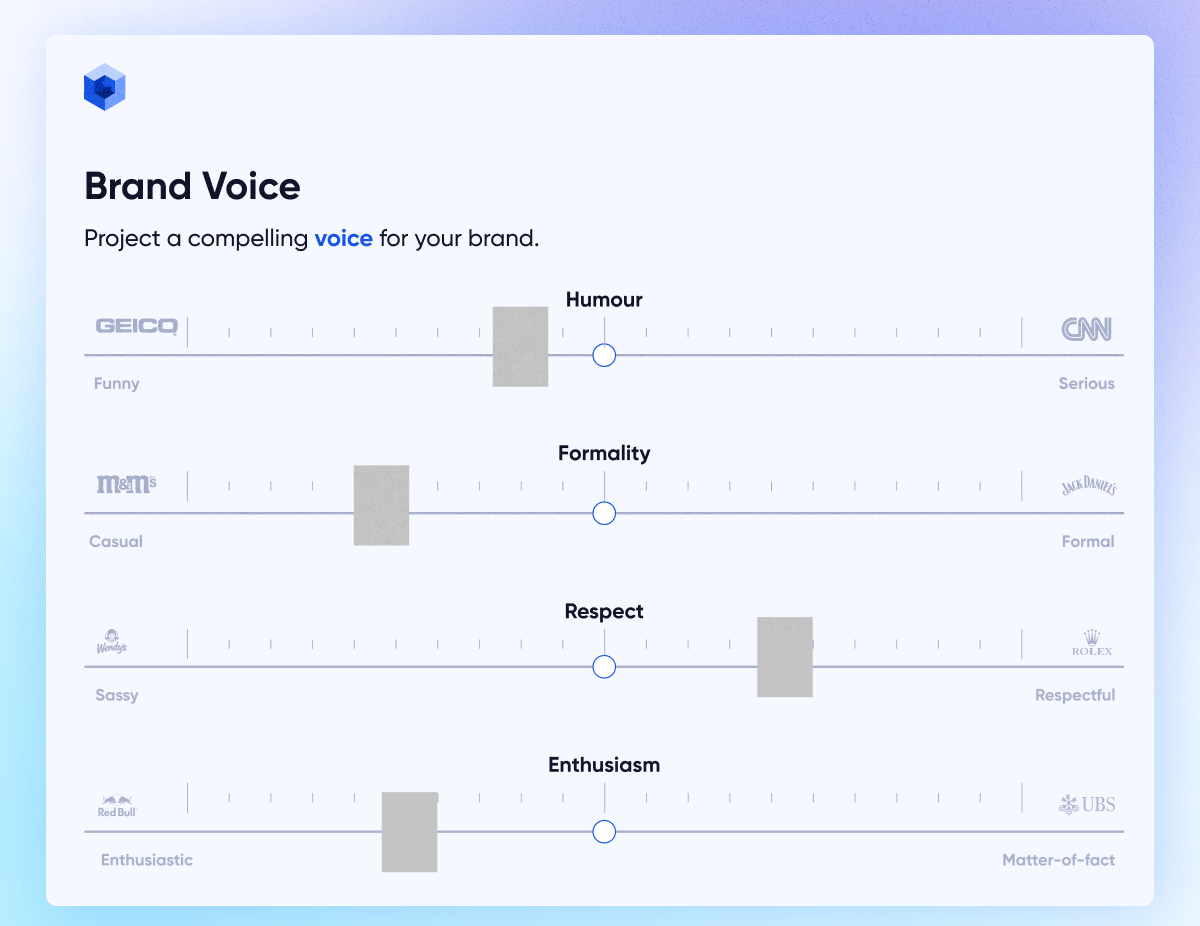
Market Fit
Before immersing yourself in the development and prototyping of your style, it's crucial to determine the market fit. This involves understanding the needs, desires, and pain points of your target audience, and assessing whether your platform offers a unique value proposition to address these aspects.
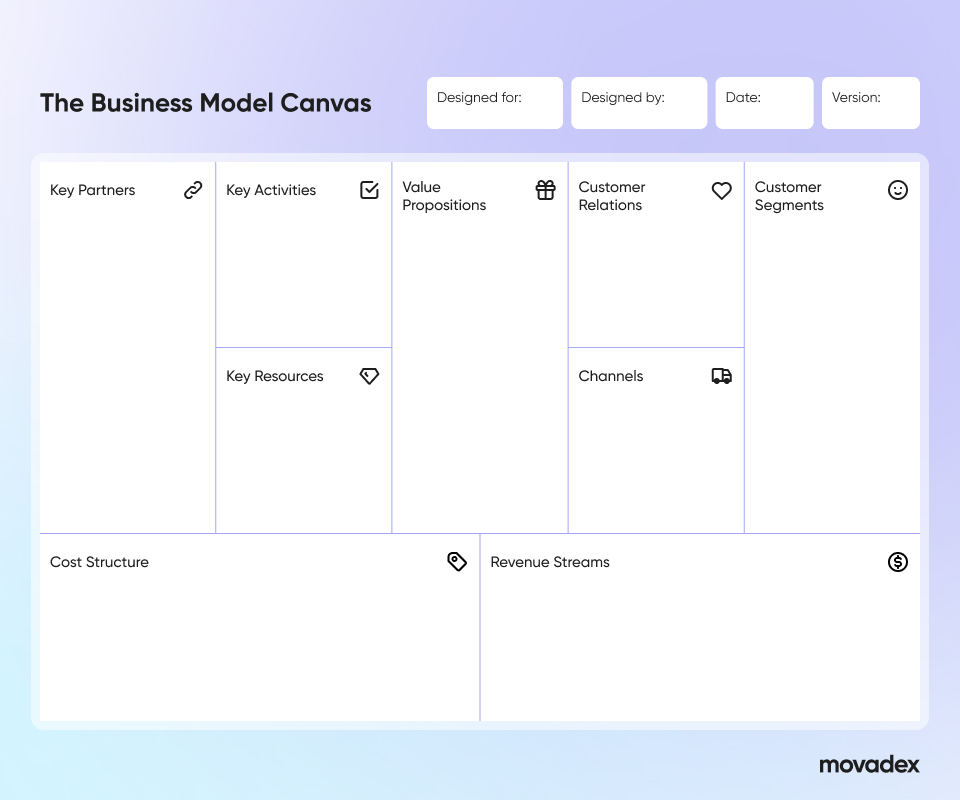
Our approach begins with an in-depth exploration of marketing and niche platforms tailored to specific communities. We scrutinize their SWOT analysis, user demographics, and engagement strategies. For instance, here's a glimpse of the research our team conducted for a client's pitch deck.

Then, it's crucial to identify gaps and opportunities: pinpoint areas where existing platforms may fall short or neglect specific user needs. This could include a lack of focus on a particular interest group, insufficient content moderation, or limited privacy features.
User Personas
In the initial stages of crafting an MVP for a B2B brand, the focus should lean towards vertical positioning rather than horizontal. What does this mean? The more precise and smaller the target audience sample, the more effective it becomes.
Take, for instance, our client TasteBuds, for whom we provided a comprehensive range of services, from branding to development. TasteBuds functions as a culinary social media platform, designed to elevate culinary skills and surprise loved ones with culinary creations.
Rather than developing a recipe platform for a broad audience, including those uninterested in cooking, TasteBuds narrowed its focus to a specific audience – individuals passionate about cooking who wish to share their recipes with like-minded enthusiasts. This deliberate approach excludes generic recipes like "don't know how to cook and don't like to cook? cook this scrambled egg!" The objective was to cultivate a community of people with shared culinary interests, representing vertical positioning.

Consider these key questions:
What goals am I aiming to achieve?
What resources are at my disposal?
Will my product offer a unique approach that captivates customers more effectively than competitors?
Positioning
The next step involves carefully considering your positioning. While the previous discovery session covered competitor research, target audience definition, and the establishment of your values and brand voice, it's now crucial to contemplate your message – "Who am I, and what is my Unique Selling Proposition (UTP)?”
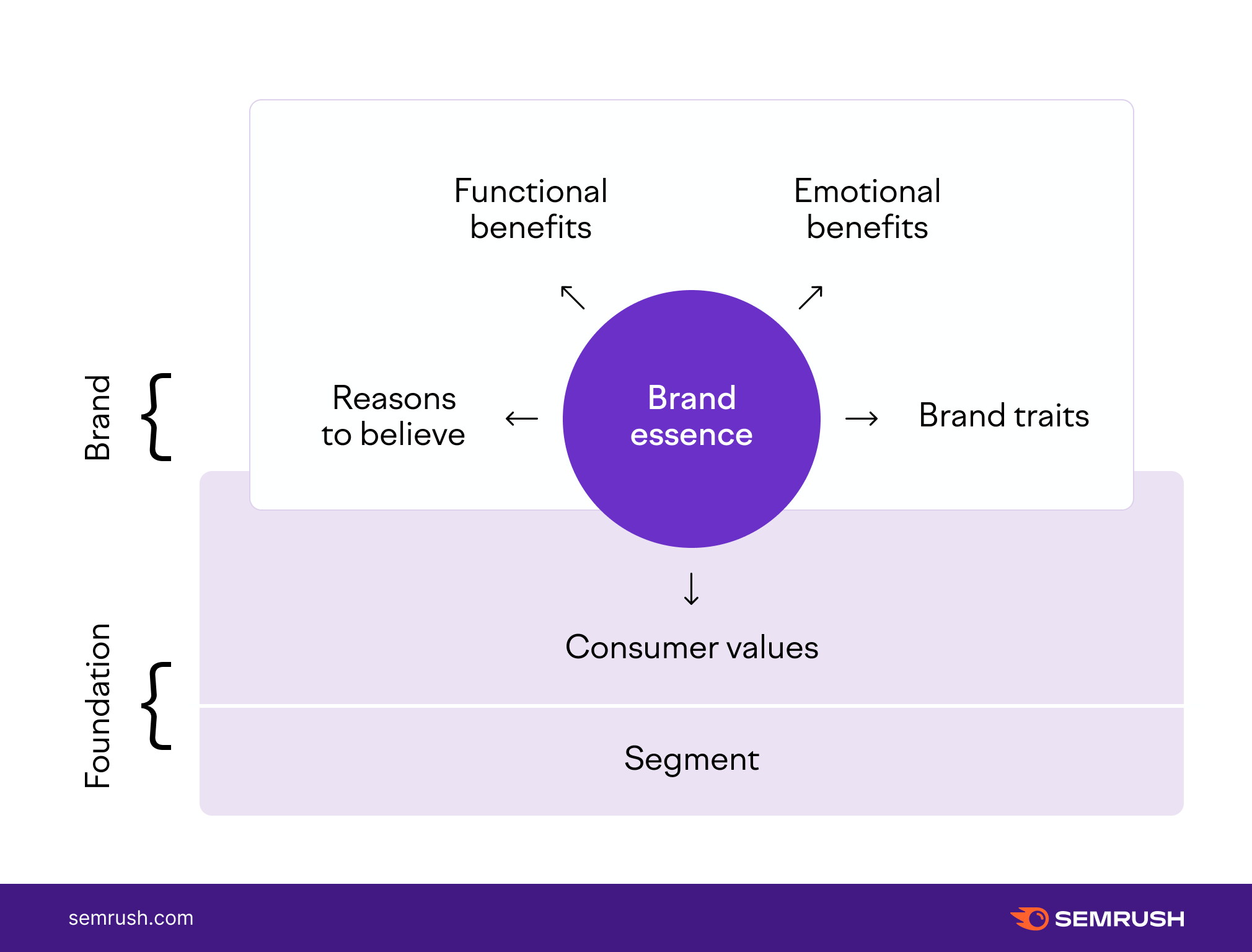
When it comes to positioning, it's crucial to target both functional and emotional benefits. In essence, you should consider:
- How the customer will use the product/service.
- What the customer should expect while using the product/service.
- What the customer should feel after using the product/service.
- What the customer should expect after using the product/service.
To truly stand out through positioning, you need to identify unique points that set you apart from the competition. For instance, if most competitors are emphasizing the functional features of the business, you can differentiate yourself by incorporating emotional elements. For example, Salesforce highlights its CRM platform's capabilities for efficient data management and analytics. Emotionally, the brand positions itself as a partner in business success, emphasizing empowerment, innovation, and meaningful customer connections.
TIPS
a) Positioning is not static. It can evolve as your company and the market grow.
b) Stay authentic to your brand values. Don't try to be everything to everyone.
c) Communicate your positioning clearly and consistently across all channels. Make sure everyone in your company understands and embodies it.
Moodboard
Following that, we initiate the creation of moodboards for logo and style development. A moodboard is a visual collage that captures the essence of your brand identity and the desired audience experience. Never overlook this step, as it serves as a crucial source of inspiration.
Here are some elements included in a B2B moodboard:
- Colors
- Fonts
- Textures
- Patterns
- Images
- Keywords
- Flat Style
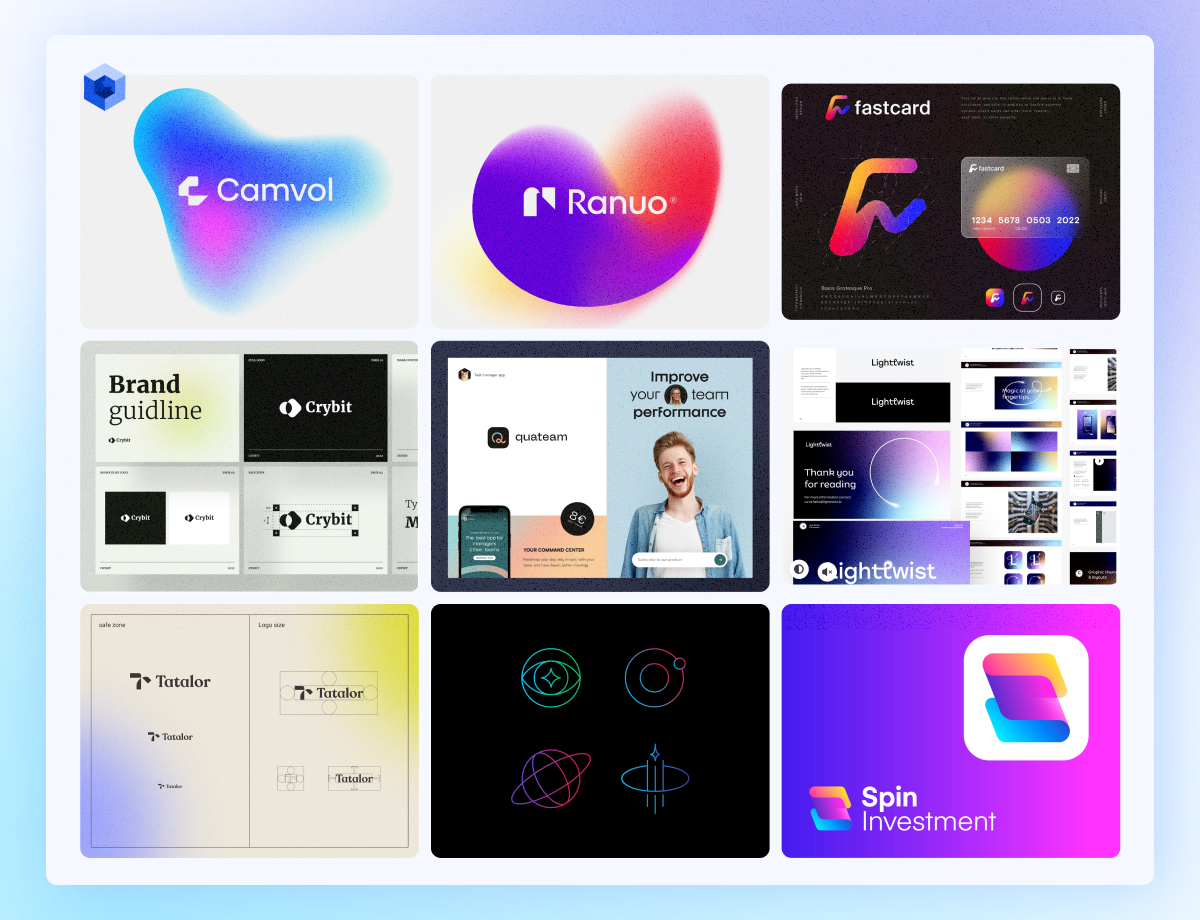
Style Development
A brand style guide is a document that defines and communicates the visual identity, tone, and values of a business.
During this stage, we are actively engaged in the development of crucial brand elements such as logos, fonts, colors, brand books, brochures, marketing materials, merchandise, business cards, and more. While it may not be a swift process, it is an investment that ultimately proves to be a valuable asset, saving you a considerable amount of time in the long run.
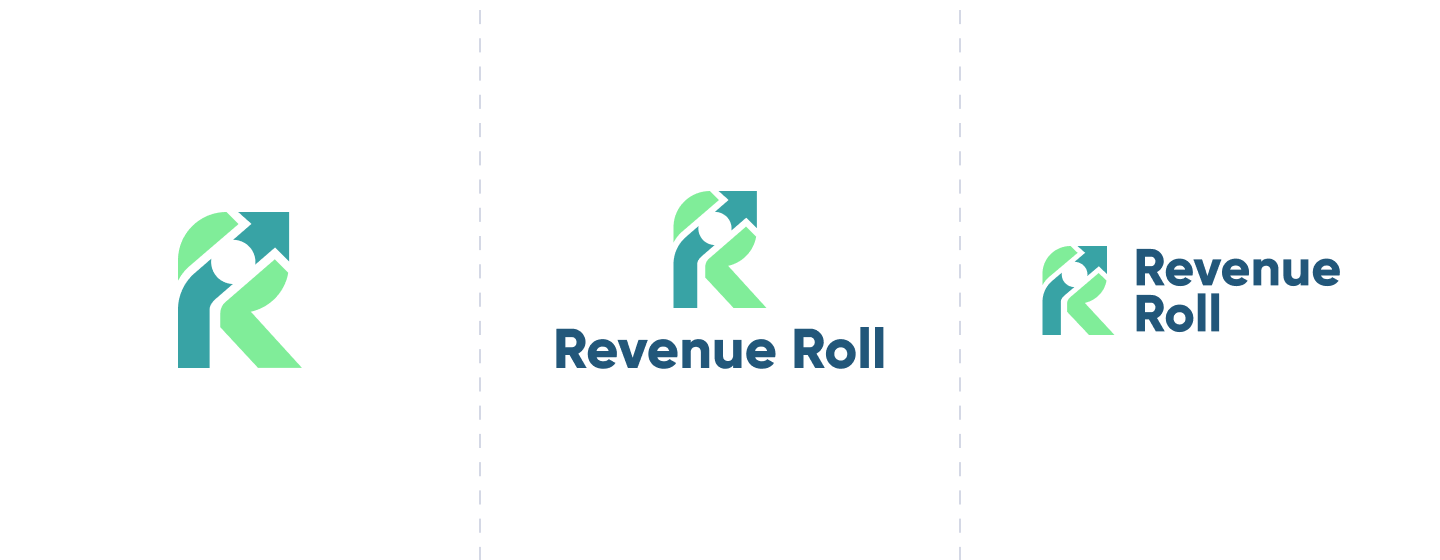
How to Delegate Branding If There Are No Designers in the Team?
If you don't have designers on your team, we've got you covered. Our designers boast an average of 3 years of experience, having completed over 50 design projects, including branding. Feel free to reach out to salome@movadex.com with your expectations, and preferences, and even request references specific to your niche. Don't fret if things seem unclear at this point—you can schedule a free consultation with Salome. This allows you to inquire about our work processes, explore our results, and gain the transparency and confidence you need.

